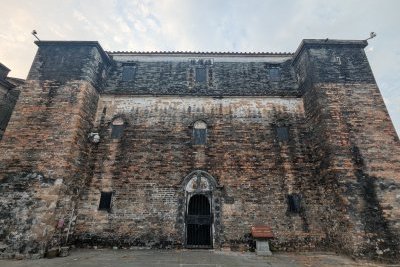
I recently visited Kaiping Diaolou, and besides Zili Village, I made a point to visit Sanmenli Village (三门里). In practical terms, I couldn’t find any public transportation to Sanmenli, so I went by car with my friend. I wouldn’t recommend it for day-trip travelers without a car since there’s only one building to see, and the inside is closed to visitors.
However, I understand why Yinglong Lou (at Sanmenli Village) is considered a core part of this UNESCO World Heritage site. Yinglong Lou is a living testament to the site's OUV Criterion (iii): "The building of defensive towers was a local tradition in the Kaiping area since Ming times in response to local banditry." According to a local family living in a house next to Yinglong Lou, this tower is the oldest diaolou in Kaiping, with over 500 years of history. They take great pride in it, as it serves as a communal tower for the "Guan" lineage (关族). Every year, on the 5th day of the Lunar New Year, more than 100 families from the village gather inside for a feast and an ancestral worship ritual, possibly the only time it opens to the public. The villagers are very friendly, and there’s no tourism business in the village. Interestingly, the village has a special festival called "Stone Dog Birthday" on the 15th day of the Lunar September, based on a legend that two stone dogs once guarded the village against bandits.As for Yinglong Lou itself, it's a three-story …
Keep reading 0 comments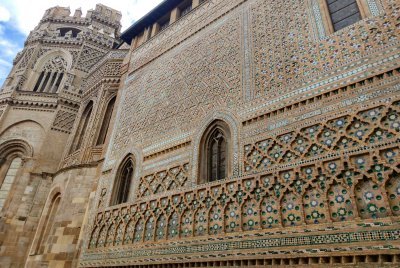
This WHS is a little bit weird to "review" as are many of the dispersed-location sites that highlight "examples of" a certain style of something. (Whether that be something natural or man-made.) Like many of the reviewers here, I experienced this WHS (in March 2025) at its sites in the city of Zaragoza. I did not go to Teruel at all.
The trip to Zaragoza was a delightful one, which can easily be done in a day or less to see the Aljafería, the excellent four Roman ruins museums, and the famed column inside "El Pilar" Cathedral. To focus more specifically on the WHS itself, I'd say the Mudejar Architecture is a great introduction to learning about the history of Muslim rule in Spain for those who are unitiated. (A period from the 700s ~ 1400s in which Muslims controlled the majority of the peninsula and then fought to maintain control in the face of Catholic kings who pushed to take the territory back.) While the WHS inscribed locations of the Mudejar Architecture are in the North, you could in theory plan a nice themed trip of Spain tracking the Muslim rule beginning in the South at World Heritage sites like Córdoba, Medina Azahara, and Sevilla, and then work your way up North to sites containing this Mudejar architecture. Such a trip would allow you to watch the historical progression and see how the Christian kings incorporated the Muslim motifs and structures from the land they …
Keep reading 0 comments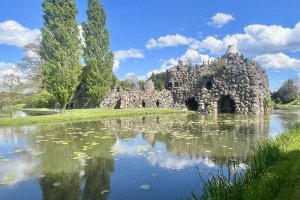
This may well be the most underrated site in Germany if you look at the ratings on this website and indeed, it is a site that reveals its extraordinary value and charm perhaps only when you dive deeper in its history and ideas. Another reason may be that some of our members wrote reviews without having seen more than one component and not even the most important ones, in which case you wonder how a rating could make any sense.
The central figure here is Prince Leopold III of Anhalt-Dessau who famously introduced landscape gardening into continental Europe. What may first sound only like a decorative achievement means actually much more since the change from the French philosophy of absolute rule, even over nature, to the open and “natural” English landscaping meant much more than an aesthetic change but a new concept of men and society. It included pedagogical, economic, social and medical reforms, more than in any other German state at the time. Also, the “noble simplicity” of the newly applied classical architecture referred to this utopian ideal.
Prince Leopold definitely imported much more then gardening books from England and wanted to reform his little country completely and for the better of his people. He aimed to change his realm into one garden, a kind of paradise, that should not only be beautiful but progressive and useful for everybody. The beacons of this garden realm are the various palaces, some of them were built anew, some older …
Keep reading 0 comments
Across the River Mersey from Liverpool is the unassuming town of Birkenhead. What has this got to do with Central Park? You may be thinking, well, quite a lot actually.When Connecticut farmer, Frederick Law Olmsted, had his plan for Central Park accepted it was the world's first publicly funded park in Birkenhead that was his inspiration. I only mention it because most people are unaware of it.Begun in 1858, Central Park was an immediate success. Taking 15 years to complete at a cost of $14 million it incorporated 36 bridges or arches, 11 overpasses, a lake and over half a million trees and shrubs.Today the park is the green heart of Manhattan and offers an escape from the hustle and bustle of the city.The park caters for runners, sports fans, children, cyclists, dog walkers etc and in the winter time there's even a public ice rink available.As parks go, it's very impressive and worth a visit if you are in New York.
Keep reading 0 comments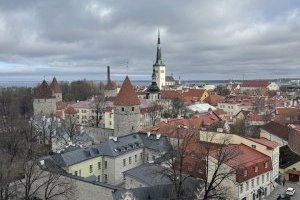
Tallinn Old Town is cited as “among the most remote and powerful outposts of the colonizing activities of the Hanseatic League in the north-eastern part of Europe in the 13th-16th centuries, provided a crucible within which an international secular-ecclesiastical culture resulting from the interchange of Cistercians, Dominicans, the Teutonic Order and the traditions of the Hanseatic League, formed and was itself exported throughout northern Europe” and as a Medieval City that constitutes “a remarkable reflection of the coexistence of the seat of feudal overlords and a Hanseatic trading centre within the shelter of a common system of walls and fortifications.” Inscribed Historic Centre (Old Town) of Tallinn, has “demonstrated in its existence as an outstanding, exceptionally complete and well preserved example of a medieval northern European trading city that retains the salient features of this unique form of economic and social community to a remarkable degree.”
We started our exploration of the Old Town in the Toompea (Upper Town), the stronghold of the former Tallinn nobility. We passed by two cathedrals: the Russian Orthodox Alexander Nevsky Cathedral and the Lutheran St. Mary’s Cathedral. The former is magnificent and reminiscent of Moscow’s St. Basil’s Cathedral (based on materials available online, I've never been to Moscow). We did not have a chance to enter the former – but its exterior is a massive rectangular structure, which reminded me of small churches or the kapilya in the Philippines. We also had a good view of the Estonian Parliament building inside Toompea Castle, …
Keep reading 0 comments
Brittany was the only region in mainland France where I had not been before, but the upcoming nomination of Carnac gave me a good reason to go. Helped by a cheap and direct flight from Djerba to Nantes, I combined it into a great Tunisian-French midweek trip comprising 1 new WHS and 2 strong TWHS.
I can’t say that Brittany felt much different from Northern France in general, although the bilingual signage gives it an exotic twist.
On my second day there, I drove to the department of Finistère (one of the four Breton departments) as that is where these “Parish closes” can be found (“Enclos paroissiaux” doesn’t translate well into English). The amount of driving here should not be underestimated: Brittany is about the size of Belgium and Luxembourg combined. I was a bit hindered by the limited mileage of my rental car – some fine print that I had overlooked when booking (500km across 2 days is not enough). In the end, I created a route that would keep my additional costs within reason ánd that included at least two of the most recommended churches, ones that would be good candidates to make the final cut whenever this site gets nominated.
I made a first stop at a minor one though, the Saint-Pierre Church in Pleyber-Christ. The parish closes were created according to a strict model, and an example such as this lets you familiarize yourself with the parts (surrounding wall, arched …
Keep reading 0 comments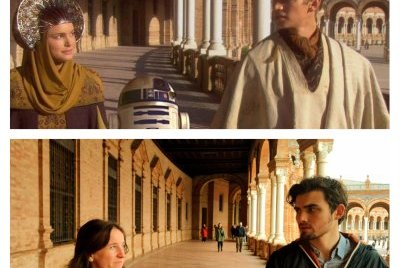
Sevilla! Gorgeous! In our Sevilla/Córdoba trip, I had wanted to like Córdoba more, but Sevilla was just too darn good. Visited March 2025.
The other reviews already describe well what there is to do here, so I'll leave those as bullet-points down below for what we covered in our trip. Our trip was made easier by pre-buying all of our tickets online before coming to the city – no line-waiting needed.
- Reales Alcázares - Fantastic audioguide that takes you through this massive complex with a super great built-in map and everything. You can spend a lot of time here, it's definitely the largest attraction in the city!
- Archivo de Indias - Easy to pop in and out, neat to see the central nervous system that the Spanish government administered their colonial interests in the Americas from.
- Giralda tower - The main attached cathedral was closed all day for a religious event, so we only got to do the tower but the view here is FANTASTIC and well worth it. Absolutely worth seeing.
- Parque Maria Luisa + Plaza de España - Wow, probably the most beautiful plaza in Spain! (And there are a lot in this country.) We re-created the shot from Star Wars Episode II here which was fun.
- Flamenco show - Woah! I'm not a big fan of dance but this was great! A very impressive and unique show, it's a cultural experience worth seeing. We opted for the most …

Visit: march the 12th,2025
I had already been up on the top of Stuttgart's tv tower some 21-22 years ago but by pure accident I found myself again in Stuttgart where I had to kill two hours.I decided to revisit Germany's tentative whs again.
The TV tower in Stuttgart was the first of its kind in the world and triggered a kind of worldwide chain reaction in the tower construction.
Today there are countless tv towers all over our planet.The Stuttgart pioneer is considered an architectural and aesthetic masterpiece by many experts with its timeless design.It was opened in feb.1956 after 20 months of construction.The total height from the ground to the top of the antenna is 216 meters.As a groundbreaking structure, the TV tower served as a model and prototype for TV towers around the world. Even the world's tallest TV tower, the Tokyo Skytree, is considered an offshoot of the Stuttgart original, and experts consider the Stuttgart TV tower to be the most beautiful and safest in the world. Due to its innovative public use ( a cafe inside a tv tower for example) , it has been imitated architecturally and stylistically in many places around the world. A key consideration in the selection process was surely that the site could fill a thematic gap in the World Heritage List. This applies to the Stuttgart TV tower as a technical monument of the post-war period and a blueprint for its kind.
The view from …
Keep reading 0 comments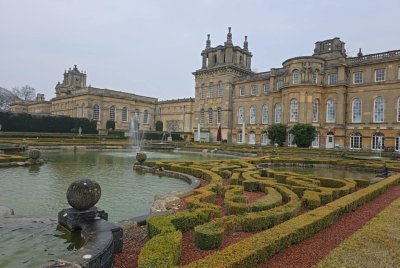
Our first UNESCO site visit since commencing our www.twobaconsandaboston.com journey. I was not going to do a review until I noticed that the last review was 2 years ago. Prices have also increased from this time with an entry fee now of 41 pounds. Whilst expensive, it also provides you 12 months of unlimited attendance, so we will come back for some return visits. Hopefully with some better weather for nature walks.
Renovations work as commenced on the exterior of the main building in January 2025 and this is expected to go for at least 2 years. It is good to see an investment in the maintenance and restoration of this UNESCO site.
We were staying in Banbury with friends, so this was a short 30-minute drive with free parking provided a short distance from the Palace. There is also a small courtesy bus for people if they have mobility issues, however the walk is only 5 minutes. A small train provides access from the Palace station located in the front of the Palace entrance of the Great Court and takes you to the Walled Gardens. We did not visit this area on this occasion and only stayed in the immediate Palace and Garden area.
The day of our visit was overcast with slight drizzle, so we did not avail ourselves of the garden or lake walks, which are extensive throughout this UNESCO site, although we did wander down to the Boatshed and Vanbrugh Grand Bridge. Its …
Keep reading 0 comments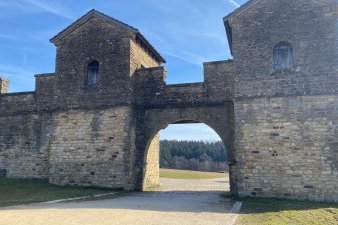
I visited the Ostkastell in Welzheim, Germany, and it turned out to be a pleasant surprise. The site is vast, and while I only explored a single fort, it was still an interesting experience. The walk through the area was enjoyable, with informative signposts and a few statues adding to the atmosphere. I wrapped up my visit with a run through the nearby woods, which made for a great combination of history and nature.
Keep reading 0 comments
Seen in February 2025 on a Lupine groups trip to Eritrea. The group had a bus, but the bus broke down just outside Dekemhare, 38 km out of Asmara. We waited in a “pub” for 2.5 hours, until they found and brought from Asmara three 4WD cars to load us all up. With a few more stops we eventually got to Qohaito at 3 pm, where we visited the following sites: the ancient dam (maybe 2500 years old, see picture, Aksum civilization??), the viewpoint over the canyon, the Egyptian Tomb, Temple of Mariam Wakiro columns and eventually the Adi Alauti cave paintings. We had a Lupine guide, an Eritrean guide and a local guide who actually knew the sites, but didn’t know anything about UNESCO and no details of why that is called the Egyptian tomb or what those 4 columns of the “temple” meant. Some people in the group read about it in Lonely planet Eritreea (last edition 2008), but didn’t remember details. The cave is not a cave, just a space under a rock, beautiful old drawings but difficult to access 30 minutes from where the cars cannot go anymore. The road is definitely a 4 WD and we where thankful that the bus broke down early in our trip because otherwise we wouldn’t have made it. No one on the trip had any idea about the TWHS and the potential value of what we saw. We got back to a town Adi Keyh at 6 pm (maybe …
Keep reading 0 comments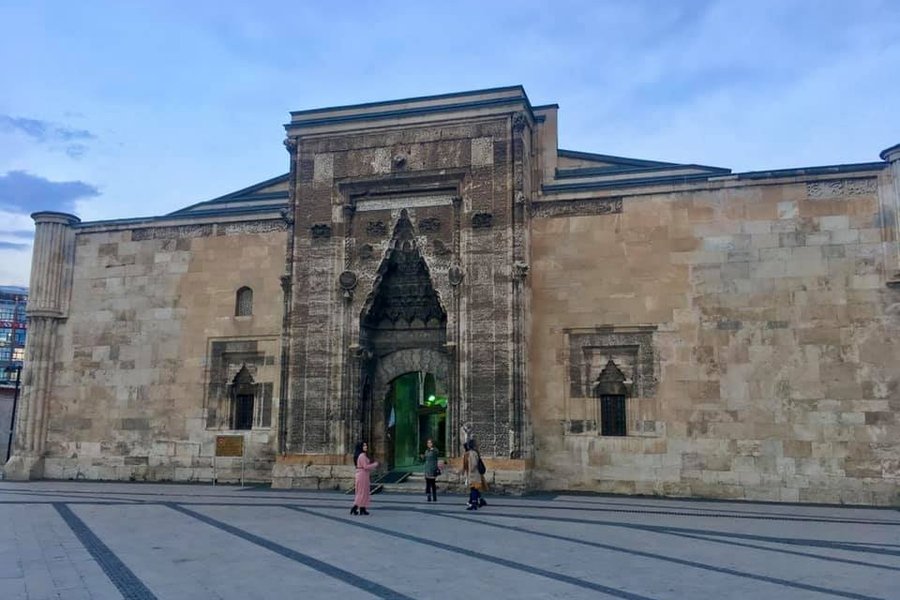
I visited both Madrasahs in Erzurum and it was a worthwhile experience. Double Minaret Madrasah has a free museum inside, whereas the Yakutiye Madrasah museum is paid. Both involve going in and out of small rooms in the original buildings to look at various displays, artwork, and artifacts. There is little English signage, though, so expect to use google translate if you don't speak Turkish.
Keep reading 0 comments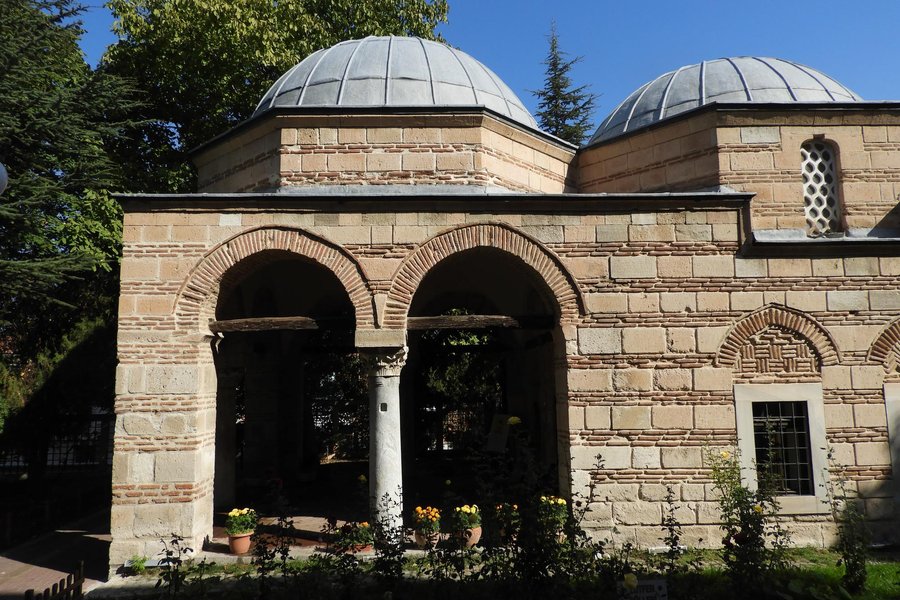
Odunpazari is a picturesque neighborhood of Eskisehir, a mid-size city easily accessible by train from Ankara. It is very walkable once you arrive, and you can wander around the colorful houses, eat ciborek, and buy handicrafts. There are a lot of museums in the area; I visited the glass arts museum, hamam museum, OMM (modern art museum), and the meerschaum museum. I would recommend spending half a day here and checking out the rest of Eskisehir after.
Keep reading 0 comments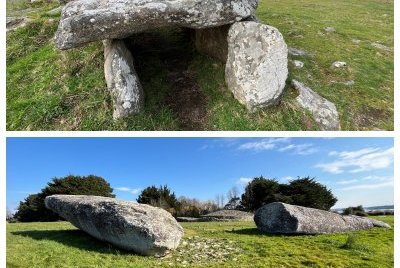
The 2025 WHC will probably bring us the inscription of number 31 on our Missing List: Carnac. Carnac is on the T List as ‘Megalithic Sites of Carnac’, but the nomination has been renamed ‘Carnac and Shores of the Morbihan megaliths’. It has been put forward as a Cultural landscape and comprises four components with thousands of standing stones and tombs.
Carnac is a representative of the European megalithic tradition since the Neolithic, which also includes the Megalithic Temples of Malta and multiple sites in the UK and Ireland, such as Stonehenge and Brú na Bóinne. While at other subjects we’ve now ended up at very niche Tier 3 sites, Carnac undoubtedly is at Tier 1 among its peers. The nominated area covers 19,598 ha, about 4x as large as Stonehenge/Avebury and 6x the sites in Malta. Its oldest parts significantly predate Stonehenge and overlap with the earliest timelines of Newgrange and Ħaġar Qim.
I started my visit at the Carnac Alignments component. Winter is a good time to visit as you’re allowed on the trail amidst the stones by yourself and there will be much less visitors overall. Entrance to the Alignments is also free from October-March. I was lucky with the weather in early March: sunny, blue skies. I parked at the Ménec alignments and then continued on foot. Nothing can prepare you for the first sight of the endless rows of neatly arranged standing stones. I walked most of the ‘Alignments trail’ that connects Ménec …
Keep reading 0 comments
In my opinion, the twinning of these two places into one WHS was brilliant as together, they present a coherent historical narrative of colonial development in the region. The architecture and artefacts in both cities are testament to a culture and townscape resulting from a blend of external influences (European and Asian) on local conditions. Each site has its own lovely ensemble of fabled historical buildings and old streets, telling the story of colonialism in this part of the world.
I had been asked which one would I recommend a tourist short on time to visit; honestly, I am incapable of answering the question. Once there, both cities are lovely and easy, comfortable places to visit, with their respective WHS zones conveniently covered on foot. They also have no shortage of amenities for tourists and visitors. In both George Town and Melaka, I would recommend at least an overnight stay to get a good feel of both places over the course of a day.
Keep reading 0 commentsI visited Tiwai Island on a Lupine Travels tour in June 2023. The intent was to stay overnight at a community center dormitory in the middle of the island. Rugged road going in. Vehicle was parked and local guides loaded our luggage onto small boats. We drifted downriver about ten minutes before banking on the opposite shore. We followed a short trail to the center where we had dinner, were entertained by locals doing traditional dances and a role play involving a demon. The next morning a guide took us through island trails. The jungle was dense. Most impressive vegetation were the banyan trees. We didn’t see any animals other than a large impressive spider, but there were plenty of birds.
Keep reading 0 comments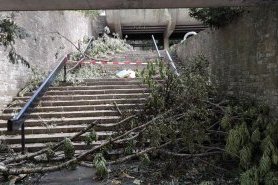
I visited this WHS in July 2023. We were staying in Geneva with a cousin who was working at CERN, and I had heard about La Chaux-de-Fonds being famous as the place of origin for Switzerland's rich watch-making history, so we planned an entire daytrip around going out to the town in the North. I'm sad to say that it is dubious whether all of the effort was worth it.
The main goal of our trip was to see the watch-making museum. According to the Internet it was to be open and operating at the hours we were visiting. However, after multiple hours of travel getting out to this town and navigating on foot from the train station to the museum – we found the museum closed. Apparently, the town had endured a huge windstorm a couple of days before which had knocked down trees and branches all over the city. There was tape covering one stairway that lead to the museum, but nothing offically blocking off the ways of accessing it. Curiously, there were no signs or anything indicating the museum was properly closed, and we couldn't tell for sure whether it was not operating or we were just looking at the wrong location for an entrance. We encountered other confused groups of tourists looking to get into the museum, and after twenty minutes of wandering around or so we finally gave up. No one had written anything online indicating that the museum was temporarily closed.
At …
Keep reading 0 comments
Jamestown and Usshertown are the oldest districts of Accra, the capital city of Ghana. According to Emmanuel, our tour guide slash driver during our visit in Accra in 2023, these towns were the origin of the Accranian people, the fishing people called Ga. Once upon a time, Accra was known as A-ga-ra.
These districts in the Greater Accra Region possess a certain charm that I thought comparable with Melaka, Georgetown, and Ipoh in Malaysia and Little India in Singapore. Just like these Southeast Asian cities, Jamestown and Usher Town were once British colonies. And all of them are strategically located along the coast of the cities – for trade. Today, these cities are vibrant and lively. However, Jamestown and Usshertown possess some stories that continue to haunt the history of humankind: 400 years of inhuman conditions brought upon by the European imperial rules onto the entire continent of Africa.
My knowledge about the Trans-Atlantic Slave Trade is mainly based on popular culture, particularly Hollywood films. Visiting the forts at Jamestown and Usshertown and listening to the stories of Ussher Fort from the perspective of the people whose forefathers were either survived, tortured, or killed by the colonizers were tremendous as much as they were also eye-opening.
Jamestown Fort was not open for tourists at the time of our visit, but its imposing structure is terrifying. Emmanuel told us that the infamous lighthouse was used by the Dutch and the British to properly dock their ships that took …
Keep reading 0 commentsAndrew_Kerr
Historical Lisbon, Global City
Historical Lisbon, Global City (Removed from tentative list)
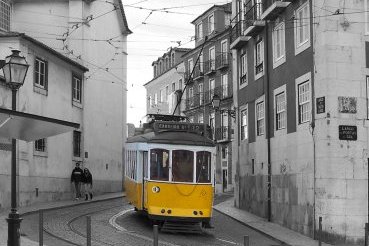
I've been to Lisbon a couple of times and enjoyed both visits. There's a lot see in the city that I once saw described as looking more like the Americas than Europe. I thought that was a fair comment with the huge suspension bridge spanning the Tagus river, the statue of Christ looking down at the city and the steep hills and trams that are all reminiscent of famous places in the New World.But this is a European city steeped in history, the most westerly city on the mainland of Europe in fact. The old town incorporates the Alfama district, one of the oldest in the city where Fado music can be heard in the bars and cafes, the 12th century cathedral resides and the steep narrow streets where the famous tram number 28 trundles by (see picture) not forgetting the 11th century castle that sits at the top of the hill and where the views of the city are spectacular. The old town is largely in the upper area and there are a couple of novel ways to get there, funicular Gloria is one way and the Elevador Santa Justa (Santa Justa lift) is another and once at the top you can ascend some steps to a viewing platform for an amazing view of the lower city.Much of the lower city was destroyed in 1755 when an earthquake devastated the area. The lower area today has wonderful large squares, an impressive railway station, the Rosario, built in the Neo …
Keep reading 0 comments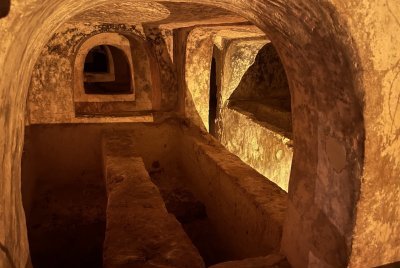
The catacombs on Malta are surprisingly numerous and the highest concentration can be found in Rabat where you find four that are accessible to visitors. I visited two of them: The largest is the catacomb of St. Paul and it is surprising how large they are: After visiting a decent introductory museum you can enter the catacombs via twenty or more separate (modern) entrances, each leading to a seperat underground complex of various sizes. They are impressive but since there is very little decoration left after a while they resemble each other. But in some you can find inscriptions or carvings that give hints about the roman, Christian or Jewish religion of their owners. For a second visit I chose the St. Agatha catacombs that you can only visit with a short tour because they had several murals left. At the start you enter a large chamber with colorful murals but they are of later, medieval origin and have been vandalized by the Islamic invaders of the Island. More interesting though more modest were to paintings from the 4th century.
When you are there it is certainly worth to visit at least one of the catacombs but they are modest compared to the already inscribed and more impressive complexes of Rome, Naples and Syracus.
A combination with the old town of Mdina seems possible but I am not in favor of combining two weak proposals: There is no connection between the baroque citadel on the hill and the …
Keep reading 0 comments